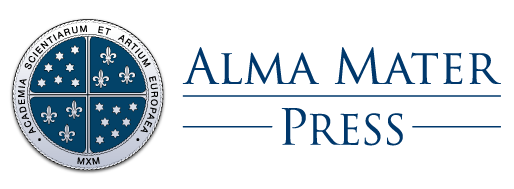The Wound in Visual Art
DOI:
https://doi.org/10.33700/1580-7118.17.2.73-94(2015)Keywords:
Rudolf Schwarzkogler, Austrian art, wound, castration, Viennese ActionismAbstract
The fine arts abound in images of the pierced, wounded, tortured, dismembered, crippled or decapitated body in all historical periods. The iconography of the wound is of long standing, and the passion for depicting open bodies can only be compared to the enthusiasm for the nude. In the history of painting and sculpture, the wounded body is most often represented in renditions of Christ’s Passion and Christian martyrs, as well as of Biblical stories about decapitation and slaughter. The topic of the wound has proved relevant to modern and contemporary art as well. In the second half of the 20th century, around 1965, when the Viennese Actionism appeared, as well as between 1968 and 1974, the two milestone dates of body art, artists engaged in performative practices, shattering the notions of the wounded or penetrable body which dominated at the time. What they exposed was the anxious image of the artist’s body. By analysing the art photos by Rudolf Schwarzkogler, the paper shows how the wound is materialised as a topic of visual art.
Downloads
References
BADURA-TRISKA, E., ur., KLOCKER, H., ur. (1992): Rudolf Schwarzkogler: Leben und Werk, Klagenfurt, Ritter.
BADURA-TRISKA, E., KLOCKER, H. (2012): Wiener Aktionismus, Kunst und Aufbruch im Wien der 1960er-Jahre, Köln, Verlag der Buchhandlung Walther König.
BATAILLE, G. (1970): “La mutilation sacrificielle et l’oreille coupée de Vincent Van Gogh” , v: Hollier, D., ur., Premiers écrits: 1922–1940, Gallimard, Paris, 258–270.
BEAUVOIR, S. (1999): Drugi spol (slov. prev. Suzana Koncut), Ljubljana, Delta.
BRACHER, M., ur. (1994): Lacanian theory of discurse: subject, structure, and society, New York, New York University Press.
DIDI-HUBERMAN, G. (2007): L’image ouverte: motifs de l’incarnation dans les arts visuels, Paris, Gallimard.
DOUGLAS, M. (2010): Čisto in nevarno: analiza konceptov nečistosti (slov. prev. Marija Zidar), Ljubljana, Študentska založba.
FRIED, M. (2008): Why photography matters as art as never before, Yale University Press, New Haven.
HUGHES, R. (1972): “The Decline and Fall of the Avant-Garde,” Time, 18. december, 1972, 111–112.
LUBELL, W. M. (1994): The metamorphosis of Baubo: myths of woman’s sexual energy, Nashville, Vanderbilt University Press.
MIKUŽ, J. (2007): “Arma Christi: ikonografija razkosanega telesa”, Acta historiae artis Slovenica, 12 , str. 17–28.
MIKUŽ, J. (2013): Le sang et le lait dans l’ imaginaire médiéval, elektronski vir, Ljubljana, Založba ZRC.
RUBIN, M. (1997), Corpus Christi: The Eucharist in Late Medieval Culture, Cambridge, Cambridge University Press.
SCHRÖDER, G. (2011): Schmerzensmänner: Trauma und Therapie in der westdeutschen und österreichischen Kunst der 1960er Jahre; Baselitz, Beuys, Brus, Schwarzkogler, München, Rainer, Fink.

